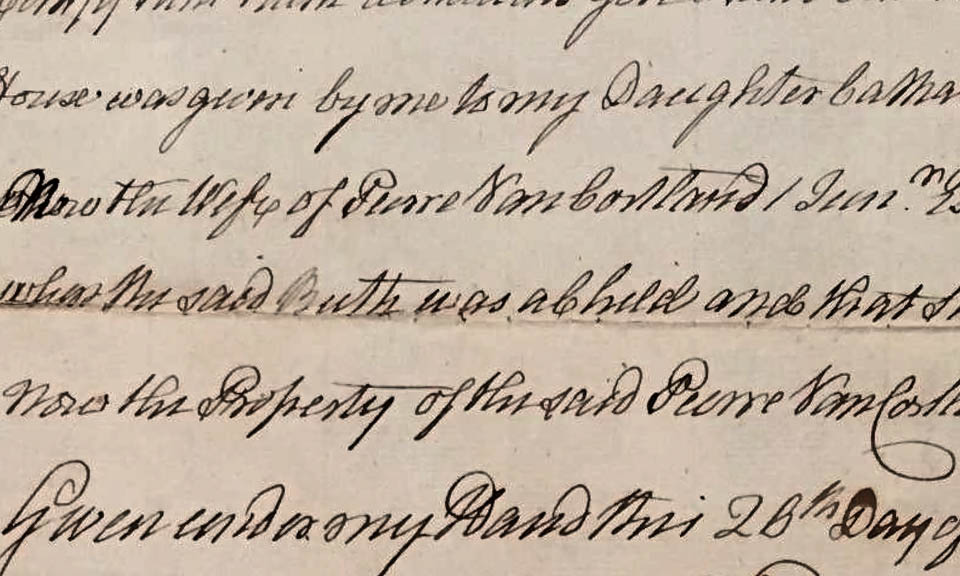The Impact of Slave Laws
The Western Ocean
1720
Unknown
This map of the Atlantic world from the atlas The English Pilot, the Fifth Book, shows navigation routes that linked Africa and Europe to the colonial Americas and the West Indies.
Mariner's Museum and Park.
Novi Belgii in America Septentrionali (detail)
1730–1740
Matthew Seutter (German, 1678–1757)
In the illustration that is a part of this 18th-century map, enslaved Africans are shown carrying goods to the British king, an allegory of the global trade network.
Historic Hudson Valley.
Daniel Horsmanden
mid-18th c.
Matthew Pratt (American, 1734–1805)
Daniel Horsemanden, one of the judges in the New York conspiracy trial of 1741, compiled his notes and trial records, along with his own description of the events. Horsemanden's narrative provides a biased account of trial and a record of justice denied.
Harvard Law School Library, Historical & Special Collections.
The Generall Laws and Liberties of the Massachusets Colony...
1672
Samuel Green, printer (English, c. 1614–1702)
Seventeenth-century legal rights and protections did not pertain to enslaved individuals.
Law Library, Library of Congress.
Family group with a black man
1631–1633
Willem Cornelisz Duyster (Dutch, 1599–1635)
Portraits of prosperous Dutch families sometimes included a black man or boy, likely an enslaved person, as a sign of their wealth and status. The name of the black man in this image is not known.
Rijksmuseum.
Slave auction (detail)
1860
Probably Edouard Rischgitz (Swiss, 1828–1909)
In this detail of a later 19th-century print, an enslaved mother shares a tender moment with her child.
Antiqua Print Gallery / Alamy Stock Photo.
John Potter and Family
c. 1740
Unknown
The Potter family with their enslaved boy.
Collection of the Newport Historical Society.
Advertisement for an unnamed enslaved mother and child
January 22, 1759
Unknown
This advertisement appeared in the Boston Gazette and Country Journal.
American Antiquarian Society.
A page from the probate inventory of Adolph Philipse
1750
Joseph Reade (English, born New York, 1694–1771)
This single page from the lengthy inventory of Adolph Philipse's estate includes the names of the enslaved individuals living at Philipsburg Manor, Upper Mills.
Adolph Philipse estate records. Manuscripts and Archives Division. The New York Public Library. Astor, Lenox, and Tilden Foundations.
Produced by Historic Hudson Valley for People Not Property: Stories of Slavery in the Colonial North Interactive Documentary.
Copyright © 2019-2025 Historic Hudson Valley. All Rights Reserved.


